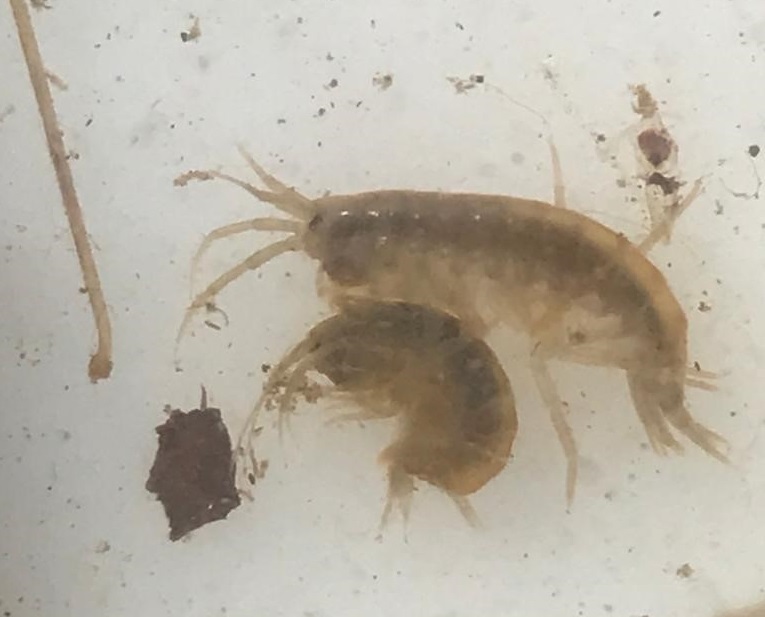Half term fun!
 Activity Trail
Come down to Seaton Wetlands this half term and take part in our activity trail. Find out more about the nature around you and see if you can spot any animal tracks!
Bird boxes
Treat the birds in your garden by making a bird box to take home with you. Join ranger Penny at Seaton Wetlands who will guide you in making the perfect bird box. Book online at Wild East Devon Events - East Devon . £10 per bird box.
Wild Hearts
 Show your love for nature this February by creating a wild heart. Why not leave your heart in your favourite wild place or somewhere that a loved one, passer-by or total stranger will happen across it to brighten their day? Share your pictures with us @wildeastdevon #wildheart. Do take care not to damage your special place by unearthing plants or picking too many flowers (remember the one in 20 rule: never pick a flower unless there are 20 others remaining and leave rare flowers or those planted in parks).
Amorous Gammarus
 In this most romantic of months, hot-blooded wild animals might hog the headlines for lazy sub editors. Certainly the animal furthest from their thoughts is a small, grey, freshwater amphipod?
But more fool them, as the most loving creature out there in East Devon must surely be the amorous Gammarus, a freshwater shrimp which swims almost everywhere closely in tandem with a friend. Our commonest species of this little shrimp and the one which fills stream dipping nets here at Seaton Wetlands is Gammarus pulex, meaning “flea shrimp” due to its similar body shape to the itchy parasite.
Experiencing the miniature world of these shrimps is simplicity itself as a small dipping net and flat bottomed tub or tray is all you need to sample your nearest stream or brook and search for shrimps in the shingle.
Enjoying nature with limited mobility
Our new Engagement and Participation Officer, Amelia Davies, shares her thoughts about her new job.
"Over the past few months I have gained a better perspective on how we each access the countryside differently and have different access needs while I was recovering from ankle surgery. I was struck by how much I was struggling with being house (sofa) bound and losing my ability to get out for a walk. I’ve always enjoyed nature most through walking, visiting nature reserves chosen specifically for their richness in nature and often tricky to access locations, this is the way it has always been for me, get my boots on and get out there.
Being in a position where I couldn’t go outside got me thinking of other ways that I could connect with nature from the comfort of my sofa. Initially I spent time at my home in Exeter, my only outlook being on the roofs of neighbours' homes where I would occasionally get a glimpse of a jackdaw or a starling and got to know the routine of the gulls flying overhead at dusk as they headed to their roost for each night.
After a week I went back to my childhood home in Teignmouth which offered a better view. My parents have a large apple in the centre of their garden, the last remaining tree from an orchard that used to sit where houses do now, over 100 years ago. It’s the favourite hangout for the neighbourhood birds that flock to the feeders adorning the tree. Even from my horizontal position I could watch the blackbirds singing from the tallest branches and the great tits squabbling. Amongst the variety of common garden birds, my parents also have a rarer bird visiting, the Cirl bunting! With Devon's stronghold for these farmland birds just 3 miles down the coast at Labrador Bay (Labrador Bay Nature Reserve, Devon - The RSPB), they are a frequent visitor in the summer months. It’s no wonder doctors are now prescribing walks in nature as a form of healing therapy, having that connection to nature is crucial for our mental health and wellbeing, the highlight of my day would be opening the curtains to watch the birds flocking in to feed in the morning. The sounds, sights, smells and texture of nature is a great healer."
Tree Clearance from Holyford Woods Reservoir
Recent visitors to Holyford Woods, on the edge of Colyton, may have noticed that the small reservoir has recently been cleared of many of the trees that have been flourishing within it, growing out of the silt and gravel deposits that have built up there over the years. We have done this, with the help of our hardworking volunteers, for a number of reasons.
Primarily it is to stop the reservoir from becoming a woodland itself! We removed both alder and willow trees which both love to have ‘wet feet’, and so consequently grow extremely quickly in this location. The old reservoir has become an important wetland habitat feature in its’ own right, and adds great value to the mixture of habitats found in close proximity to its’ location, which includes ancient broadleaved woodland, wet woodland (alder carr), freshwater stream, grassland, mature hazel coppice and young, naturally regenerating woodland.
|